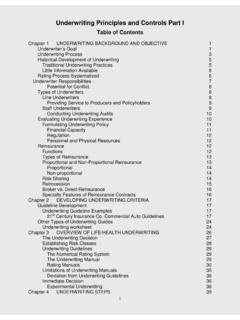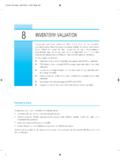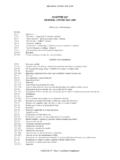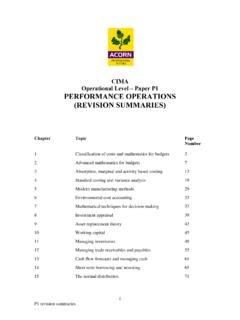Transcription of LT Options Trading System
1 LT Options Trading System_____ By Henrik Santander , All Rights Reserved An Options Trading System based on Credit Spreads and Iron Condors in indexes. Copyright 2015 by The Lazy Trader ( ). All rights reserved. This material may not be reproduced or used in any manner whatsoever without the express written permission of the author. DISCLAIMER THE INFORMATION PRESENTED IN THIS MATERIAL IS FOR EDUCATIONAL PURPOSES ONLY Options Trading has large potential rewards, but also large potential risks. You must be aware of the risks and be willing to accept them in order to invest in the Options markets. This Options Trading System is neither a solicitation nor an offer to Buy/Sell Options .
2 No representation is being made that any information you receive will achieve profits or losses similar to those discussed on this course. The past performance of any Trading System or methodology is not necessarily indicative of future results. All the contents presented here are for educational purposes only. Do not trade with money you cannot afford to lose. The author of this material is not a registered financial advisor. Please get the advice of a professional financial advisor before investing your money in any financial instrument. Table of Contents 1. Introduction .. 4 2. The Business of selling Options .
3 4 Benefits of selling Options .. 4 Ideal circumstances for selling credit spreads .. 4 3. Position entries .. 4 Instruments to trade .. 4 Reading a short term overbought and a short term oversold market .. 4 The Opportunity Factor .. 4 First trade of the monthly expiration cycle .. 4 Secondary trades of the expiration cycle .. 4 Diversifying over time and across the prices spectrum .. 4 Beta-weighting positions to understand their differences .. 4 Capital Allocation .. 4 4. Playing 4 When things go wrong - Trade Adjustments .. 4 How to adjust or roll a Credit Spread. Mechanics of a credit spread adjustment.
4 4 When to adjust and where to deploy the new position .. 4 The math behind credit spread adjustments. Estimation of portfolio losses for each type of credit spread .. 4 Differences between selling Puts vs selling Calls .. 4 When everything fails .. 5 5. Closing Positions .. 10 6. Trading costs .. 10 Impact of commissions .. 10 Considerations about weekly Options as a premium seller .. 10 7. The surroundings and yourself .. 10 The toughest challenges (Patience and the contrarian mentality) .. 10 The Media and Markets' noise .. 10 Not getting tricked by the performance reported by newsletters .. 10 Trading with realistic expectations.
5 10 8. Anti-crash protection. Successfully dealing with market crashes.. 10 9. Summing up .. 10 10. Resources .. 10 1. Introduction 2. The Business of selling Options Benefits of selling Options Ideal circumstances for selling credit spreads 3. Position entries Instruments to trade Reading a short term overbought and a short term oversold market The Opportunity Factor First trade of the monthly expiration cycle Secondary trades of the expiration cycle Diversifying over time and across the prices spectrum Beta-weighting positions to understand their differences Capital Allocation 4. Playing defense When things go wrong - Trade Adjustments How to adjust or roll a Credit Spread.
6 Mechanics of a credit spread adjustment. When to adjust and where to deploy the new position The math behind credit spread adjustments. Estimation of portfolio losses for each type of credit spread Differences between selling Puts vs selling Calls When everything fails There is no single Trading strategy that works in all market conditions. selling Out of the money Credit Spreads also has a killer environment, and that is a sustained move against your position. Some traders argue that a spike in volatility after you are already in a position is your worst enemy. That is not entirely true, because when selling a Credit Call Spread you are benefited if the market falls, even though during that fall volatility increases.
7 A market that consistently moves in one direction (against your position), be it to the upside or to the downside, throughout the entire life of your trade is what can truly impact you negatively. The more persistent the move in the same direction, the greatest the danger of seeing your initial position threatened as well as the adjustments made to it. A realistic trader should understand this scenario and be aware of his potential worst losses in order to properly define his capital allocation per trade, total portfolio exposure, as well as a consistent trade adjustments strategy. Let s analyze some possible really negative outcomes.
8 First a falling market You sell a Credit Put spread when there is extreme pessimism in the market. Usually, by the time the number of stocks above their 20 DMA is less than 30%, the McClellan Oscillator below -150 and Stochastics below 20, the market has already fallen around 4%-5% from its most recent swing high (sometimes even more). That s a piece of the move where you were not exposed and it is in your favor. That s why it is good to wait for that extreme first and then deploy your capital when Trading individual credit spreads. You place the out of the money Credit Put spread at the 10% probability of expiring in the money mark or around 10 deltas.
9 By doing that, you are far from current price action. How far? Well, that really depends on time left to expiration plus current volatility of the instrument. But for illustration purposes let s use a real life example. On August 1, 2014 the market reached an oversold extreme as defined by the three indicators previously explained. SPX closed at 1925 that day and the 1720 October SPX Put had a 90% probability of expiring out of the money (48 days to expiration). 1720 is 205 points below 1925, or below. The most recent swing high of SPX had been reached 8 days earlier, on July 24. It was a high of 1991. This means the market had already fallen A bet on the 1715/1720 Put spread, below would only be penetrated if the market made a total swing from 1991 down to 1720.
10 That s a significant correction of 13%, which obviously doesn t take place every month. Logically you re destined to win frequently with this approach. Now, if the market had actually fallen close to that level, you could have adjusted the trade before it became a full loser. Volatility would have expanded and the new 10% probability Put would be located much farther than the first one sold away from market price. It s because of that volatility expansion and fear in the market that the new 10% probability Put could be 12%-15% away from market price or even more. Again this depends on time left to expiration and how much volatility actually incremented.






